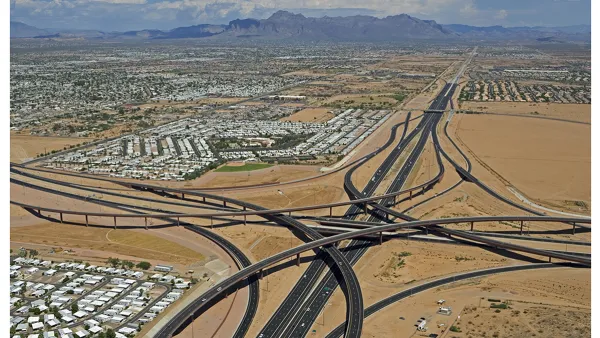Last Thursday, House and Senate leaders announced agreement on an $8.2 billion waterways infrastructure bill, and if they have their way, it won't be their last major agreement. On Monday, a successor highway bill (to MAP-21) will be released.
A trio of infrastructure articles penned by The Hill's Keith Laing shows that Congress is on a bit of an infrastructure role lately.
"Lawmakers in the House and Senate announced on Thursday evening that they had reached an agreement on a new Water Resources Reform and Development Act after lengthy negotiations that lasted the better part of six months," writes Laing. [See House press release.]
"The water bill identifies about $8 billion worth of new water infrastructure projects and authorizes funding for them, though the actual money will be doled out by appropriations committees," Laing writes about the agreement to fund port and waterway capital projects.
With that agreement reached (but to be voted on this week), legislators hope to tackle the much bigger task of transportation reauthorization. Laing writes that "Senate Democrats have said that they will unveil their version of the new transportation bill (this) week."
The leading senators on transportation issues did not say how they intend to pay for their new round of proposed infrastructure funding.
Laing writes that "(t)he gas tax typically brings in about $34 billion per year, but the current transportation bill contains more than $50 billion in road and transit spending even with the 2013 sequester budget cuts factored in." The gap is expected to grow to $20 billion in 2015 according to Laing.
"Sen. Barbara Boxer (D-Calif.) said Thursday that the upper chamber's bill would last six years and call for funding transportation projects at the current level of approximately $50 billion adjusted for inflation,", Laing writes in his third piece, "Senate schedules highway bill markup."
According to a press release, "(t)he bill will be marked up in the EPW Committee on Thursday, May 15th at 10:00 am ET". At press time, a notice of the hearing was available on the Senate Commerce, Science and Transportation Committee calendar for May 15.
According to AASHTO Journal, additional principles that the new bill will include are:
- Keeping formulas for current core programs;
- Focusing on policies that expand transportation opportunities for rural areas;
- Continuing efforts to leverage local resources in order to speed up transportation construction, create jobs, and support economic growth; and
- Requiring "better information sharing" regarding federal grants.
With inflation, reduced driving, increased fuel efficiency, and growing numbers of electric cars that pay no gas tax, plugging the highway trust fund gap for six years will require well over $120 billion.
Can corporate tax reform bridge the ever-widening gap caused by ever-declining gas tax receipts? Of course, the gap could be narrowed by increasing the gas tax, stagnant since 1993, though that doesn't seem very likely.
FULL STORY: The Hill: Transport advocates want highway bill after $8.2B water agreement

National Parks Layoffs Will Cause Communities to Lose Billions
Thousands of essential park workers were laid off this week, just before the busy spring break season.

Retro-silient?: America’s First “Eco-burb,” The Woodlands Turns 50
A master-planned community north of Houston offers lessons on green infrastructure and resilient design, but falls short of its founder’s lofty affordability and walkability goals.

Delivering for America Plan Will Downgrade Mail Service in at Least 49.5 Percent of Zip Codes
Republican and Democrat lawmakers criticize the plan for its disproportionate negative impact on rural communities.

Test News Post 1
This is a summary

Test News Headline 46
Test for the image on the front page.

Balancing Bombs and Butterflies: How the National Guard Protects a Rare Species
The National Guard at Fort Indiantown Gap uses GIS technology and land management strategies to balance military training with conservation efforts, ensuring the survival of the rare eastern regal fritillary butterfly.
Urban Design for Planners 1: Software Tools
This six-course series explores essential urban design concepts using open source software and equips planners with the tools they need to participate fully in the urban design process.
Planning for Universal Design
Learn the tools for implementing Universal Design in planning regulations.
EMC Planning Group, Inc.
Planetizen
Planetizen
Mpact (formerly Rail~Volution)
Great Falls Development Authority, Inc.
HUDs Office of Policy Development and Research
NYU Wagner Graduate School of Public Service



























